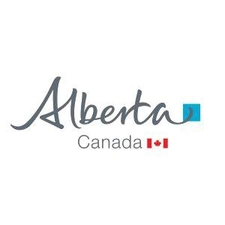Lotic Riparian - Strahler Order Derived
Simple
- Date ( RI_367 )
- 2011-11-30
- Date ( RI_366 )
- 2011-11-30
- Status
- onGoing; enContinue RI_596
- Maintenance and update frequency
- continual; continue RI_532
- Keywords ( RI_528 )
-
- ALBERTA
- AQUATIC
- BIOTA
- DRAINAGE
- ECOLOGY
- FLOOD
- HABITAT
- INLANDWATERS
- LAIPR
- LOWER-ATHABASCA-INTEGRATED-PLANNING-REGION
- LOWER-PEACE-INTEGRATED-PLANNING-REGION
- LPIPR
- NORTH-SASKATCHEWAN-INTEGRATED-PLANNING-REGION
- NSIPR
- RDIPR
- RED-DEER-INTEGRATED-PLANNING-REGION
- RIPARIAN
- RIVER
- SHORELINE
- SOUTH-SASKATCHEWAN-INTEGRATED-PLANNING-REGION
- SSIPR
- STREAM
- UAIPR
- UPIPR
- UPPER-ATHABASCA-INTEGRATED-PLANNING-REGION
- UPPER-PEACE-INTEGRATED-PLANNING-REGION
- WETLAND
- Government of Canada Core Subject Thesaurus Thésaurus des sujets de base du gouvernement du Canada ( RI_528 )
-
- Government information
- Use limitation
- Open Government Licence - Alberta (https://open.alberta.ca/licence)
- Access constraints
- license; licence RI_606
- Use constraints
- license; licence RI_606
- Spatial representation type
- vector; vecteur RI_635
- Metadata language
- eng; CAN
- Metadata language
- fra; CAN
- Topic category
-
- Environment
- Begin date
- 1981-01-01
- End date
- 1995-12-31
))
- Reference system identifier
- unknown / unknown / unknown
- Distribution format
-
-
HTML
(
unknown
)
-
XML
(
unknown
)
-
ZIP
(
unknown
)
-
HTML
(
unknown
)
- OnLine resource
-
Lotic Riparian - Strahler Order Derived - (HTML)
(
HTTPS
)
Dataset;HTML;eng
- OnLine resource
-
Original metadata (https://open.alberta.ca/opendata)
(
HTTPS
)
Dataset;HTML;eng
- OnLine resource
-
Lotic Riparian - Strahler Order Derived - (XML)
(
HTTPS
)
Dataset;XML;eng
- OnLine resource
-
Lotic Riparian - Strahler Order Derived - (Downloadable Data)
(
HTTPS
)
Dataset;ZIP;eng
- File identifier
- 6808e6ac-bc44-4f48-a2fb-3f773531a1e0 XML
- Metadata language
- eng; CAN
- Character set
- utf8; utf8 RI_458
- Hierarchy level
- dataset; jeuDonnées RI_622
- Date stamp
- 2025-09-30
- Metadata standard name
- North American Profile of ISO 19115:2003 - Geographic information - Metadata
- Metadata standard version
- HNAP ISO:19115 - 2003
Overviews

Spatial extent
))
Provided by

 Arctic SDI catalogue
Arctic SDI catalogue